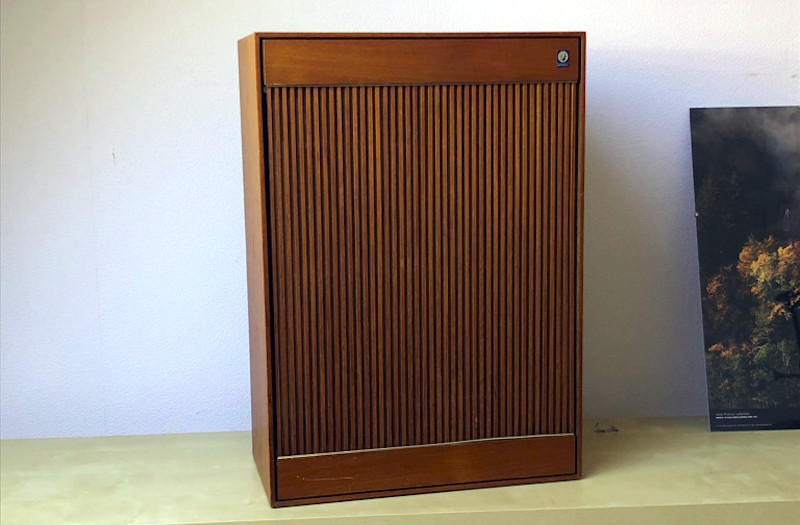We’re in a fortunate position when it comes to audio gear, because advances in amplifier and signal processing technology have delivered us budget devices that produce a sound that’s excellent in comparison to those of a few years ago. That said, a decent quality device is good whichever decade it was manufactured in, and a speaker from the 1960s can be coaxed into life and sound excellent with a modern amplifier. It’s something [Sebastius] has explored, as he picked up an attractive-looking set of Swedish speakers from the 1960s. Wanting to bring them into the 21st century, he’s upgraded them for Sonos compatibility by hacking in the guts of an IKEA Symfonisk bookshelf speaker.
The speakers themselves looked good enough, but on closer examination they proved to bear the scars of many decades. After testing new wiring and drivers they still had a good sound to them. Their passive crossover meant that hooking them up to a single amplifier is as straightforward as it was decades ago, but a Symfonisk has an active crossover and two amplifiers. Fortunately there’s a neat hack by which those two amplifiers can be combined as one, and this is what he’s done with the resulting Symfonisk electronic package mounted on the reverse of the speaker.
The fate of the original speaker’s broken mid-range and tweeter drivers was a common enough one back in the day as speakers were ill-matched to amplifiers. Too small an amp would need turning up in volume to get a good sound resulting in distortion that would burn out the top end drivers, while too much power would result in the bass drivers being overloaded and failing. It’s unclear whether the drivers in a vintage speaker would be well-matched to an amplifier such as the Symfonisk, but we’re guessing they are safe while run at sensible volumes. Perhaps of more interest is whatever on-board DSP a Symfonisk contains, because while vintage speakers were designed for as flat a response as possible, modern compact speakers use DSP to equalise the frequency and phase responses of otherwise not-very-good-sounding enclosures. If the Symfonisk does this then those adjustments will appear as distortion in the sound of a different cabinet, but the question remains whether that distortion will be significant enough to be detectable by ear.
If the Symfonisk catches your attention, we’ve covered a teardown of it in the past.















Are there any handy DSP modules you can just drop in between your sound source and the amp?
I used a ADAU1701 and ADAU1401 a few times. (Contrary to my Intuition the 1401 ist the newer Board)
Quite capable DSP Board for 14-16€ per Board and once a clone iUSB or EZ-USB as a Programming Interface.
Each board has Stereo IN and 4 Channel OUT
There are some more or less useful Tutorials.
The one to got me Started was https://www.instructables.com/id/Mr-Speaker-3D-Printed-DSP-Portable-Speaker/
If i read correctly, he didn’t test with new drivers, but combined the working drivers from both speakers into one of them and fitted that unit with the Ikea/Sonos amp.
Yup!
Unless you’re driving them from your phone, this era speaker shouldn’t need amps to sound good. Crossovers sucked and they dissipated much heat energy.
Stereo sound as well as a lot of audio progress is unknown to the next generation, only one thing keeps progressing. LOUD!
Sound mixing and production before the CD was based on the natural law of Pink Noise, where higher frequency means less amplitude to keep power constant. This natural law enabled LP’s to be cut with pre emphasis so they are less hissy than if this wasn’t done. TV audio and FM also do this.
Along came the CD and engineers could crank up the treble and newer tweeters were needed to handle the assault of White Noise which is the same as all that analog clipping. I wonder how long that vintage set of drivers will last with the 100watt amp and modern sound production? Easily a hundred times as much high end treble will be sent to the tweeter. Those heavy wood grilles were more for the muzak crowd and kids and pets, frowned on for a reason.
One critical word was omitted from the title “cabinet”.
What was done was analogous to completely replacing the drivetrain and suspension from a car and saying you upgraded the car.
I just did a similar hack for a pair of outdoor speakers, and if you’re already digging into the guts of a speaker like the ones in the article, I could recommend bypassing the passive crossover entirely, and instead directly drive the woofer and tweeter independently using the 2 (bi) amps inside each Ikea speaker. Once you use TruePlay to retune the dynamic crossover and EQ, this should bring way more fidelity to the sound output.